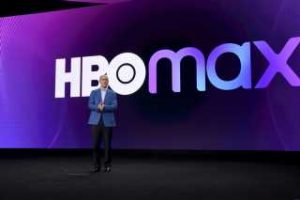HBO Max “Would Not Be Where It Is Today” Without AT&T, John Stankey Asserts

WarnerMedia streaming service HBO Max “would not be where it is today” without the company being part of AT&T, John Stankey asserted, even though that won’t be the case much longer.
“The strength of the two companies” together has boosted the service past 44 million U.S. subscribers in combination with linear HBO, the AT&T CEO said. Distribution strength as well as “economic clout and market clout” from the AT&T end have helped the rollout, which began almost exactly a year ago. Stankey made the comments during a virtual appearance this morning at J.P. Morgan’s 49th annual Technology, Media and Communications Conference.
Despite those rosy sentiments, AT&T last week announced it was spinning off WarnerMedia in a $43 billion deal with Discovery that is expected to close next summer. Stankey said direct-to-consumer streaming would be a “global opportunity,” but AT&T wireless and broadband services are largely based in the U.S. “As a result of that, when you look at the opportunity to grow a fantastic subscriber base” for HBO Max, “we kind of looked at this and said, ‘it’s time to unleash the media assets to go and seize a multi-hundred-billion-dollar opportunity.’”
Discovery’s international strength played a key role in the deal, Stankey added.
In order to maximize streaming, he added, “it’s a little bit of a different shareholder base and management base than what we’d typically have” in AT&T’s traditional business.
Going forward, a Warner-Discovery combo will be able to compete with Netflix and Disney in the top echelon of streaming, Stankey said. “I do believe they’ll get over the hump,” he said. “They will have opportunities to think about other things they distribute on that platform.”
The stunning WarnerMedia transaction, which was formally announced a week ago, followed close on the heels of a similar spin of satellite operator DirecTV. Private equity firm TPG agreed to take a 30% stake, with AT&T handling the rest. Together, the two deals made AT&T’s retreat from the media business official and represented losses to AT&T shareholders in the tens of billions of dollars. Asked by moderator and J.P. Morgan analyst Phil Cusick to elaborate on the strategic thinking behind the moves, Stankey said they didn’t come about suddenly.
“We don’t wake up one day and say, ‘Let’s go find a transaction,’” he said. “There’s been a fair amount of deliberate work that’s gone on, probably even predating” Stankey’s ascension to CEO last July.
The financial proceeds from the Discovery deal will address “concerns about the balance sheet,” Stankey said. “A little bit of that overhang starts to ease and I would expect the multiples to start to improve.”
Stankey addressed the company’s decision to cut its dividend, a sacrosanct source of revenue for individual investors, who make up an outsized portion of the company’s shareholder base. He said it stemmed from the fact that the company would be about 35% smaller after the two spinoffs. Proceeds from the spinoffs would be reinvested in the company’s business — particularly an expensive buildout of a 5G network — which will be good news for shareholders, he said. Even after the cuts, the dividend is “very, very attractive,” he said, with about $8 billion to $9 billion a year earmarked for it. “We expect that’s going to put us in the 95th percentile” of U.S. corporations.
Exact dividend terms must be approved by the company’s board of directors and are typically announced much closer to when they are paid out.
The game plan from here for AT&T, Stankey said, is to focus on fixed and mobile connectivity. That area has accounted for three-quarters of total revenue. During the three years when the company owned WarnerMedia, AT&T has had such a broad set of objectives that its core focus on telecom needs sharpening, Stankey said.
“We haven’t gotten the brand and the position of the brand to the position I want it in the market,” he said. “We’re still a little obtuse in terms of what the AT&T brand stands for, and we are about ready to do some things that are going to improve that.”
Read More About:
Source: Read Full Article
